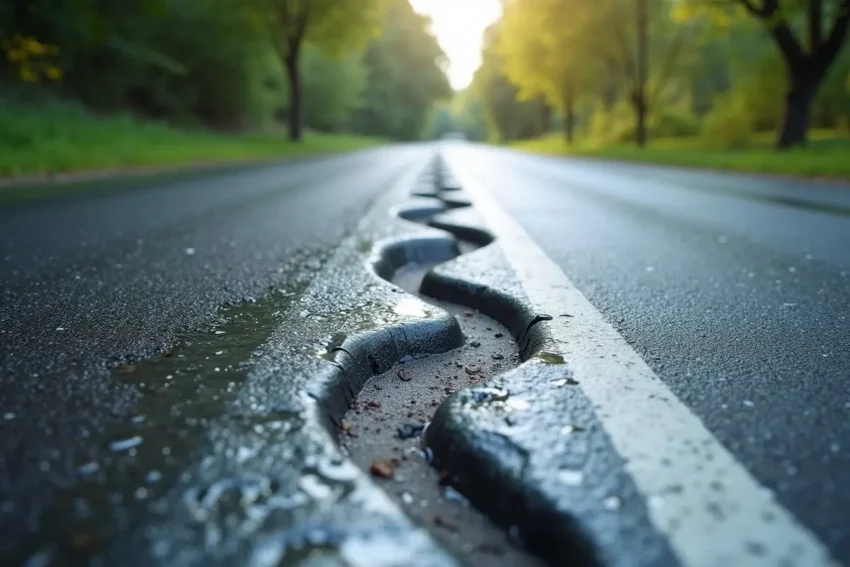Have you ever driven through a construction zone after a heavy rain only to hit a big puddle that sends water splashing everywhere? What seems like a small inconvenience can actually point to a much bigger safety issue.
A Portland vehicle injury lawyer will tell you that poor road slope and drainage are often behind accidents in these situations. When water collects on the roadway, it increases the risk of hydroplaning and hidden hazards. Understanding why slope matters helps drivers recognize the importance of safe construction practices.
The Basics of Road Surface Slope
Road surface slope is the slight angle built into the pavement that helps water run off instead of collecting on the road. Engineers design these slopes with precision so that even after heavy rain, water drains safely to the side. Without the right slope, construction zones can quickly turn into puddle-filled hazards.
Why Water Pooling is Dangerous
When water pools on the road, it creates slippery conditions that can cause drivers to lose control of their vehicles. Motorcyclists and cyclists face an even greater risk, as puddles can conceal uneven surfaces or debris. Over time, standing water also weakens pavement, leading to cracks and potholes that make roads even more dangerous.
How Poor Slope Design Leads to Water Problems
It may not be something most drivers think about, but even small mistakes in how a road is sloped can create serious water issues. When slope design is incorrect, water does not drain properly, and this can lead to problems that affect both safety and road quality.
Improper Grading During Construction
When the surface of a road is not graded at the correct angle, water tends to settle instead of flowing away. Over time, this can cause large puddles that persist long after a rainstorm has ended.
Mistakes in Temporary Construction Zones
Construction areas often use temporary surfaces that may not be sloped correctly. These short-term fixes can create immediate pooling problems, which are especially dangerous in active work zones where visibility is limited.
The Domino Effect on Road Damage
Once water starts to pool, it seeps into cracks and weak spots in the pavement. This accelerates the formation of potholes, leading to increased hazards for drivers and longer repair times for road crews.
The Role of Construction Safety Standards
Construction crews do not just guess when it comes to road slope and drainage. There are safety standards in place to guide the construction and maintenance of roads, ensuring that drivers and workers remain protected.
Why Standards Exist
Safety standards are designed to make sure water drains properly, keeping roads safer during and after rain. They also help ensure that construction crews follow proven methods rather than cutting corners.
Protecting Drivers and Workers
By following these guidelines, crews reduce the risk of accidents caused by poor drainage or standing water. Standards also protect workers in construction zones, where water hazards can make the job site unsafe.
Consequences of Ignoring Standards
When standards are overlooked, the results can be dangerous and costly. Roads may need frequent repairs, and in the worst cases, accidents can happen that put drivers at serious risk.
What This Means for Drivers in Portland
Portland is known for its frequent rain, which means road design and drainage matter even more here. For drivers, a poor slope in construction zones is not just an inconvenience; it can be a genuine safety concern.
Rain and Road Design Go Hand in Hand
Because Portland receives so much rainfall, any mistake in slope design can quickly result in pooling water. Drivers face the added challenge of navigating puddles that might hide hazards underneath.
How Poor Conditions Contribute to Crashes
Hydroplaning, skidding, and unexpected potholes are more likely when water is left sitting on the road. Even cautious drivers can be caught off guard when construction zones are not properly maintained.
The Importance of Documentation After an Accident
If a crash happens in a construction area, noting the condition of the road can be key evidence. Photos, witness accounts, and even weather reports may help show that poor drainage played a role.
When to Seek Legal Guidance
If you are hurt in a crash and suspect unsafe road conditions played a part, it may be time to speak with a lawyer. An experienced attorney can investigate whether poor slope design or drainage issues contributed to the accident. Getting legal guidance helps you understand your options and protects your rights moving forward.
Conclusion
Water pooling in construction zones may seem minor, but it can create serious risks for drivers and weaken the roads we rely on. Understanding how slope and drainage work gives you a better idea of why safe road design matters in Portland’s rainy climate. If you are ever injured in a crash where road conditions played a role, a Portland vehicle injury lawyer can help you pursue the guidance and support you need.

